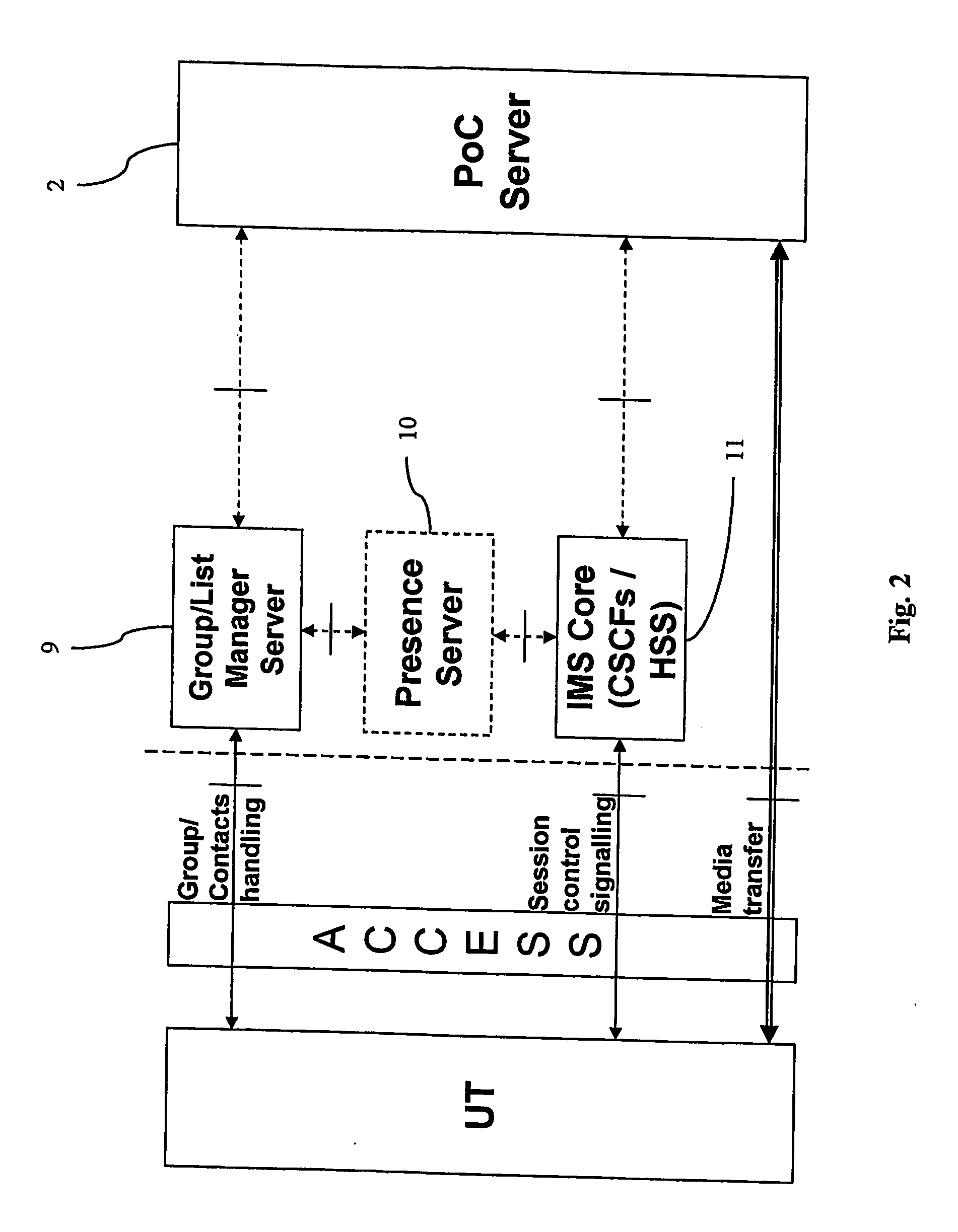Method of reducing delay
a delay reduction and delay technology, applied in the field of delay reduction, can solve problems such as critical system delay, and achieve the effects of reducing set up delay, reducing delay, and significantly reducing user experience of setup delay during a poc servi
- Summary
- Abstract
- Description
- Claims
- Application Information
AI Technical Summary
Benefits of technology
Problems solved by technology
Method used
Image
Examples
example 1
Application Control Message (Packet)
[0041] The PoC client in the terminal receives RTP media in the DL, 31 in FIG. 5. When the estimating function in the PoC client concludes the end of the talk burst, by discovering that the x-bit of the RTP header is set, by the expiration of an End of talk burst timer, or by reception of an explicit end of talk burst message, it sends an connection setup signal 53 in the form of a RTCP Source Description (SDES) message or / and Receiver Report (RR) message or a compound RTCP message. A RTCP-SDES message contains so called SDES Items, which describes the source of the data,e.g. NAME: the real name of a source e.g. “Anders Andersson”. another Item is EMAIL : Electronic mail address SDES item, e.g. “John.doe@nowhere.nu”. The RTCP message then triggers the UL TBF setup. The RTCP message should not consume more than 5% of the available session bandwidth, however, the gain of using RTCP as Early UL TBF setup makes it reasonable to loosen this requireme...
example 2
Application Media Message (Packet)
[0043] The PoC client in the terminal receives RTP media in the DL, 31 in FIG. 5. When the PoC client concludes that the end of the talk burst has been reached, by discovering that the x-bit of the RTP header is set, by the expiration of an End of talk burst timer, or by reception of an explicit end of talk burst message, it sends a RTP packet 53, where the RTP payload table of context field indicates that this RTP packet is a NO_DATA packet, i.e. the FT=15. In order not to waste scarce radio resources in the other group members downlinks, the PoC server should discard these RTP packets in the case that this RTP packet is not part of a current talk burst. This embodiment requires some scanning of RTP messages, at least RTP messages that are not part of a current talk-burst (Not in between m-bit set to x-bit set / or other end of talk burst signals).
[0044] Although these examples are intended to be used before the PoC user decides to respond, by pre...
PUM
 Login to View More
Login to View More Abstract
Description
Claims
Application Information
 Login to View More
Login to View More - R&D
- Intellectual Property
- Life Sciences
- Materials
- Tech Scout
- Unparalleled Data Quality
- Higher Quality Content
- 60% Fewer Hallucinations
Browse by: Latest US Patents, China's latest patents, Technical Efficacy Thesaurus, Application Domain, Technology Topic, Popular Technical Reports.
© 2025 PatSnap. All rights reserved.Legal|Privacy policy|Modern Slavery Act Transparency Statement|Sitemap|About US| Contact US: help@patsnap.com



